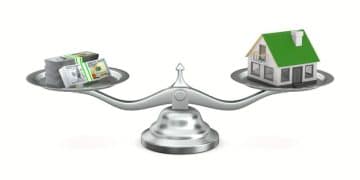Mastering Personal Finance: Your Path to Financial Freedom

Anúncios

Achieving financial freedom is a goal shared by millions, yet only a small percentage of people truly master their personal finances. For many, money remains a constant source of stress—bills pile up, savings disappear, and debt becomes overwhelming. But financial independence is not about being rich overnight; it’s about controlling your finances instead of letting them control you.
Mastering personal finance means understanding how to manage income, expenses, debt, investments, and long-term goals strategically. It’s the foundation of a secure, stress-free life—one where you make decisions based on purpose, not pressure. This comprehensive guide explores the essential principles, tools, and habits that will set you on the path toward lasting financial freedom.
1. Understanding Personal Finance
Personal finance refers to the management of your money and financial decisions—including budgeting, saving, investing, and protecting your assets. It encompasses every aspect of how you earn, spend, and plan for the future.
The key pillars of personal finance are:
-
Income Management – knowing where your money comes from and how to optimize it.
-
Expense Control – tracking and reducing unnecessary costs.
-
Saving and Investing – building wealth through disciplined accumulation and growth strategies.
-
Debt Management – using credit wisely to avoid financial traps.
-
Financial Planning – setting short- and long-term goals with a structured roadmap.
When these pillars are balanced, you gain both financial stability and the confidence to pursue your ambitions—whether that means owning a home, traveling the world, or retiring early.
2. Building a Solid Financial Foundation
Before chasing investment opportunities or side hustles, it’s essential to establish a strong foundation. This involves knowing exactly where your money goes and setting up systems that support long-term success.
a) Create a Realistic Budget
A budget is your financial roadmap—it tells your money where to go instead of wondering where it went. Start by listing all your income sources and fixed expenses (rent, utilities, insurance). Then, allocate portions for savings, debt repayment, and discretionary spending.
A popular framework is the 50/30/20 rule:
-
50% for needs (housing, groceries, transport)
-
30% for wants (entertainment, dining out, hobbies)
-
20% for savings and debt repayment
Budgeting apps like Mint, YNAB (You Need a Budget), or PocketGuard make tracking easy, automatically categorizing transactions and identifying spending leaks.
b) Establish an Emergency Fund
Financial freedom starts with security. Build an emergency fund that covers at least three to six months of living expenses. This fund protects you from unexpected events like job loss, medical bills, or car repairs—preventing the need for high-interest loans or credit card debt.
c) Manage and Eliminate Debt
Debt isn’t inherently bad, but uncontrolled debt destroys financial stability. Start by listing all your debts, their interest rates, and minimum payments. Use one of these strategies:
-
Debt Snowball Method: Pay off the smallest debts first to build momentum.
-
Debt Avalanche Method: Tackle the highest interest debts first to minimize costs.
Also, avoid revolving credit balances—pay off your cards in full each month. Over time, responsible credit use improves your credit score, unlocking better rates on future loans or mortgages.
3. Cultivating Smart Spending Habits
Smart spending isn’t about deprivation—it’s about intentionality. Every dollar you spend should align with your priorities.
a) Track Every Expense
Awareness is the first step toward control. Track your daily spending for 30 days and categorize expenses. You’ll quickly identify “money leaks” such as subscriptions you forgot about or impulse purchases that add up over time.
b) Adopt the “24-Hour Rule”
Before buying anything non-essential, wait 24 hours. This small delay helps you separate emotional desires from logical decisions and drastically reduces impulse spending.
c) Live Below Your Means
Financial freedom depends on spending less than you earn—no exceptions. Lifestyle inflation (spending more as income rises) is one of the biggest barriers to wealth. Instead, maintain a modest lifestyle even as your earnings grow; invest the difference.
4. Saving and Investing for the Future
Building wealth requires more than saving—it demands smart investing. While saving ensures security, investing generates growth.
a) Understand the Difference Between Saving and Investing
-
Saving: Short-term, low-risk, stored in easily accessible accounts (e.g., emergency fund).
-
Investing: Long-term, moderate to high risk, focused on growth (e.g., stocks, mutual funds, real estate).
b) Start Investing Early
The earlier you invest, the more you benefit from compound interest—earning returns on both your initial investment and accumulated gains. Even small, consistent contributions can grow substantially over time.
Example: Investing $200 per month at 8% annual return could grow to over $600,000 in 40 years.
c) Diversify Your Portfolio
Don’t put all your eggs in one basket. Diversify across asset classes—stocks, bonds, ETFs, and real estate—to reduce risk and maximize long-term returns.
For beginners, index funds and exchange-traded funds (ETFs) offer low-cost, diversified exposure to the market.
d) Use Tax-Advantaged Accounts
Leverage retirement accounts such as 401(k), IRA, or Roth IRA to grow your wealth tax-efficiently. Many employers also match 401(k) contributions—essentially free money you shouldn’t leave on the table.
5. Protecting Your Wealth
Financial freedom also means protecting what you’ve built. Without proper safeguards, one unexpected event can erase years of progress.
a) Insurance Coverage
Ensure you have adequate coverage for:
-
Health insurance – prevents medical expenses from derailing your finances.
-
Life insurance – supports your dependents in case of death.
-
Disability insurance – replaces income if you’re unable to work.
-
Property insurance – protects valuable assets like your home or car.
Insurance may seem like an expense, but it’s truly an investment in peace of mind.
b) Estate Planning
Even if you’re young, establishing a will or trust ensures that your assets are distributed according to your wishes. Include power of attorney and healthcare directives to cover emergencies.
6. Developing a Financial Growth Mindset
Sustainable wealth is more about mindset than money. Many financially successful people share common attitudes that help them thrive:
-
Continuous learning – reading about personal finance, attending workshops, and following experts.
-
Long-term thinking – focusing on future gains instead of instant gratification.
-
Goal-setting – defining clear, measurable financial goals and tracking progress.
-
Discipline – sticking to your budget and investment plan, even when tempted.
Remember: financial mastery is a journey, not a destination. Celebrate small wins along the way—paying off a credit card, hitting a savings target, or reaching a new investment milestone.
7. Passive Income and Financial Independence
True financial freedom comes when your money works for you—not the other way around. This is achieved by generating passive income, or earnings that require minimal ongoing effort.
Common sources include:
-
Dividend-paying stocks
-
Rental properties
-
Peer-to-peer lending
-
Online businesses or digital assets
-
Royalties from books, courses, or creative work
Start small: reinvest your returns and use compounding to accelerate growth. Over time, these income streams can cover your expenses, giving you full autonomy over your time and lifestyle—a state known as Financial Independence, Retire Early (FIRE).
8. Common Mistakes to Avoid
Even with the best intentions, many people fall into traps that delay financial success. Be mindful of these pitfalls:
-
Ignoring your credit score – this affects loans, insurance, and even job opportunities.
-
Living on credit cards – paying only the minimum balance creates a debt spiral.
-
Lack of diversification – putting all investments in one stock or asset class increases risk.
-
No financial goals – without direction, it’s easy to drift into overspending.
-
Neglecting retirement planning – the earlier you start, the easier it becomes.
Avoiding these mistakes requires consistency and awareness—qualities that separate those who struggle financially from those who thrive.
9. Technology Tools for Personal Finance Management
Modern tools make it easier than ever to automate and optimize your financial life:
-
Budgeting: Mint, YNAB, GoodBudget
-
Investing: Robinhood, Vanguard, Fidelity
-
Expense tracking: PocketGuard, Spendee
-
Credit monitoring: Credit Karma
Automation helps ensure bills are paid, savings are transferred, and investments grow—without daily stress.
Conclusion: Your Journey to Financial Freedom Starts Today
Financial freedom isn’t about luck or high income—it’s about consistency, discipline, and knowledge. By budgeting wisely, saving intentionally, investing strategically, and protecting your assets, you create a life where money serves your goals, not the other way around.
Start small: track your expenses, build an emergency fund, and invest a little each month. Over time, these habits compound into lasting wealth and peace of mind. Remember, the road to financial mastery is not a sprint—it’s a marathon. But every decision you make today brings you one step closer to true financial independence.





